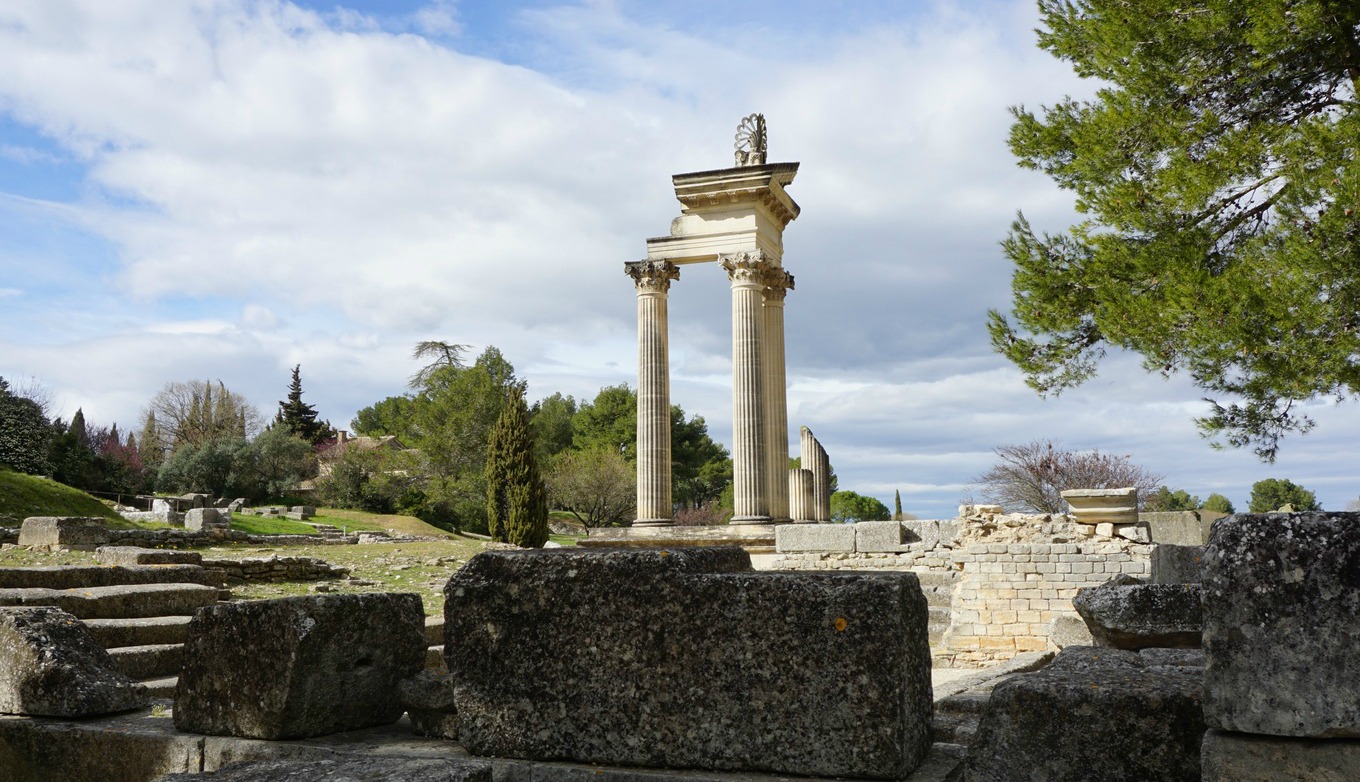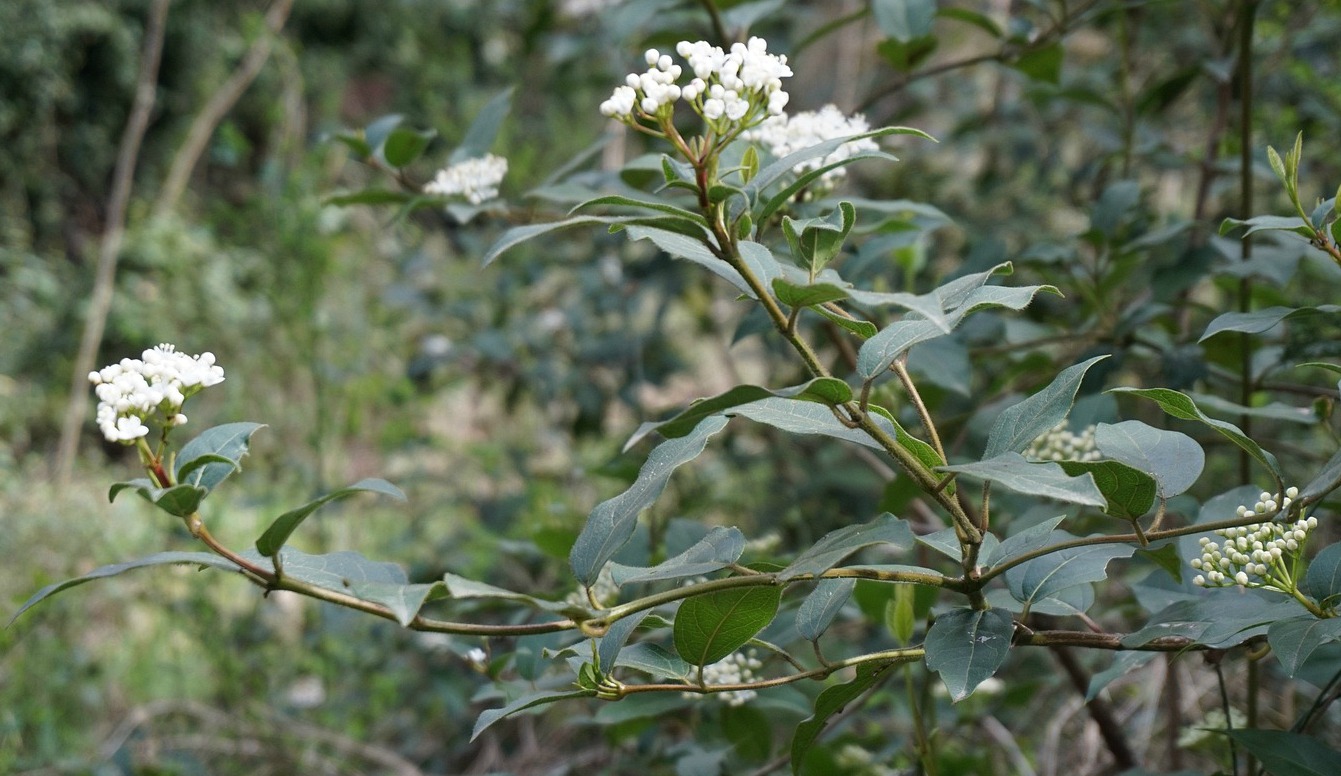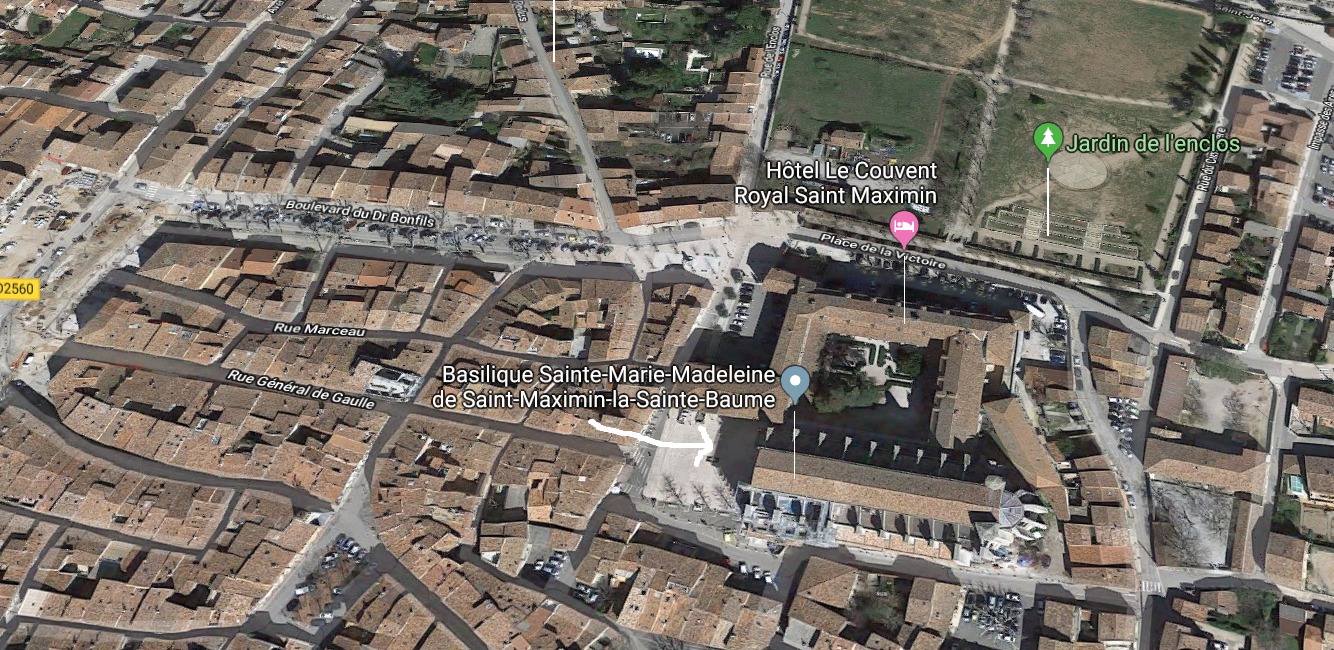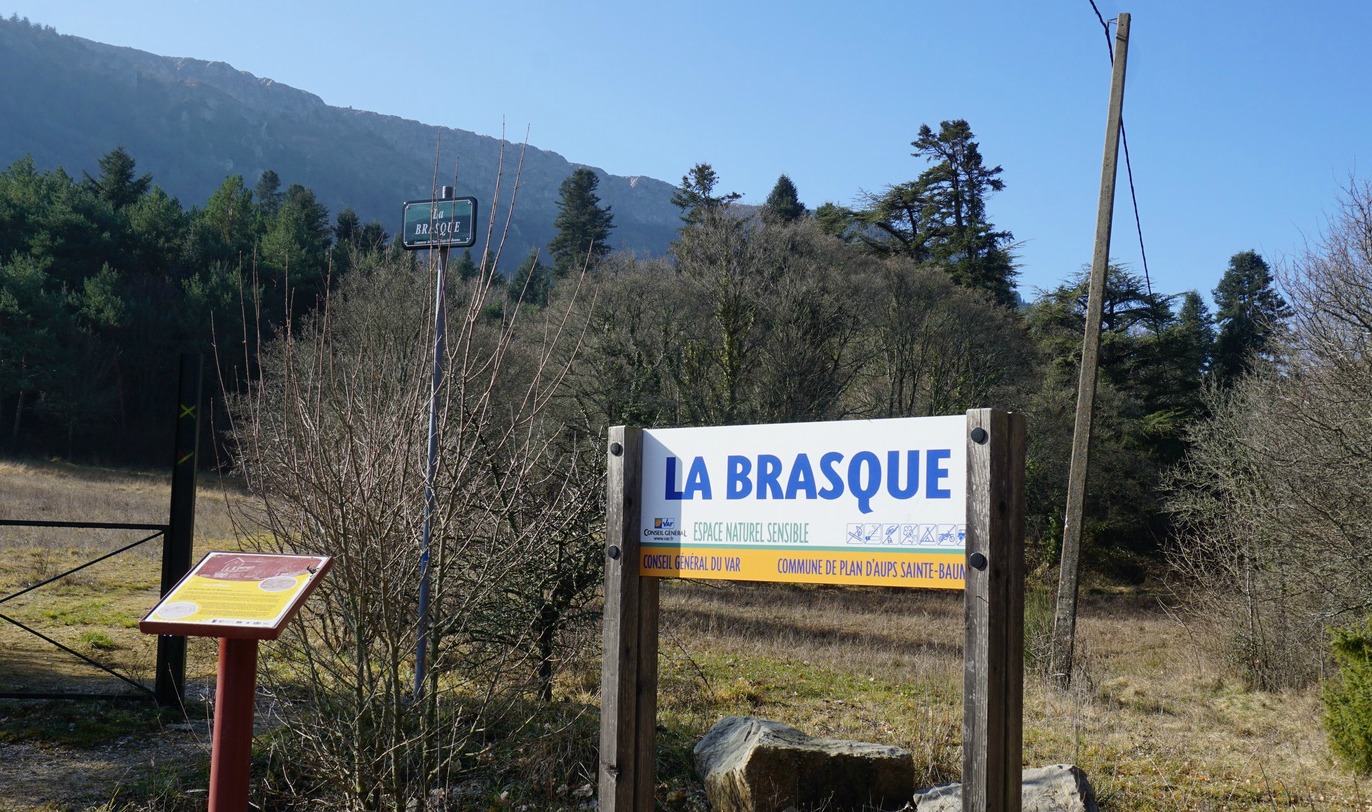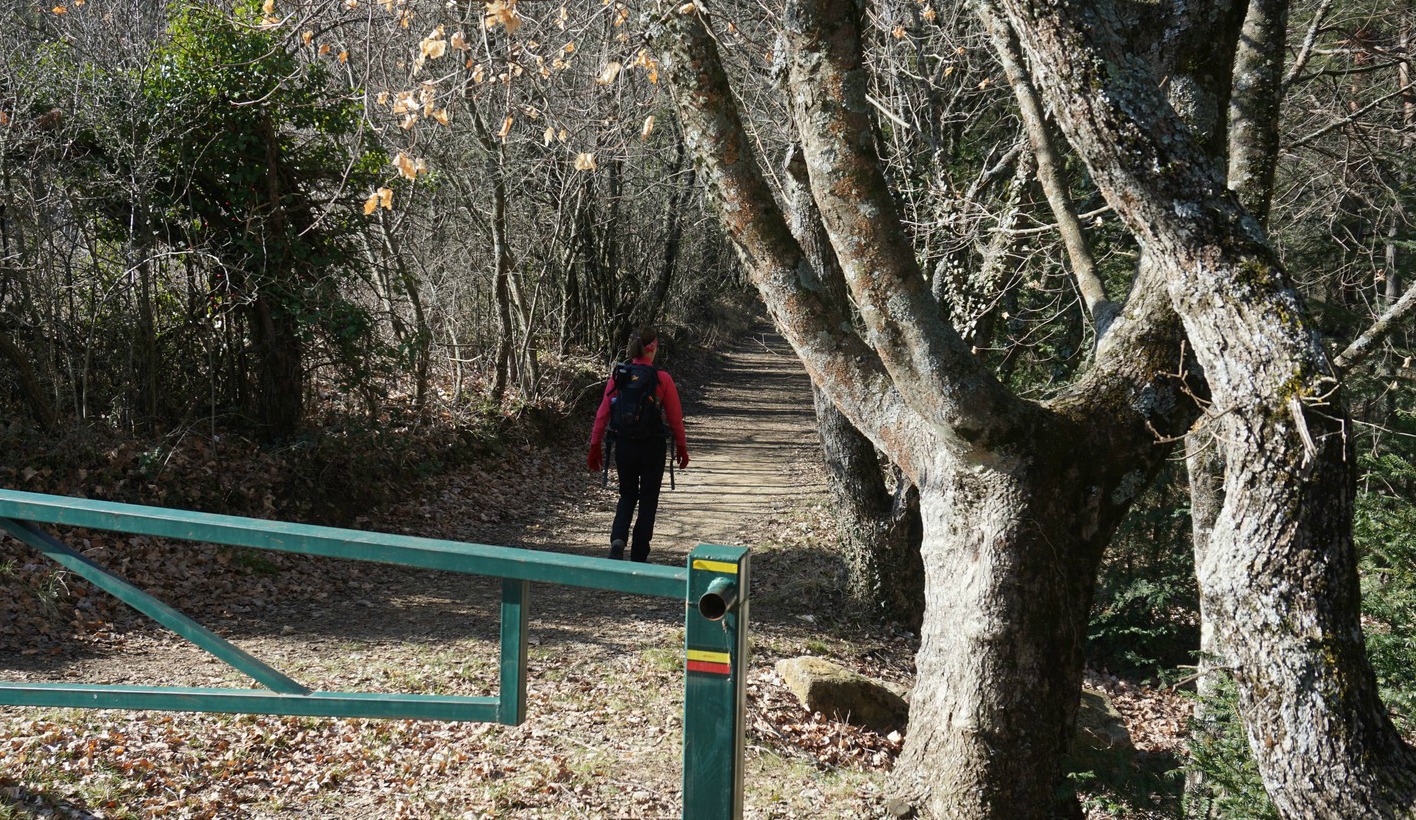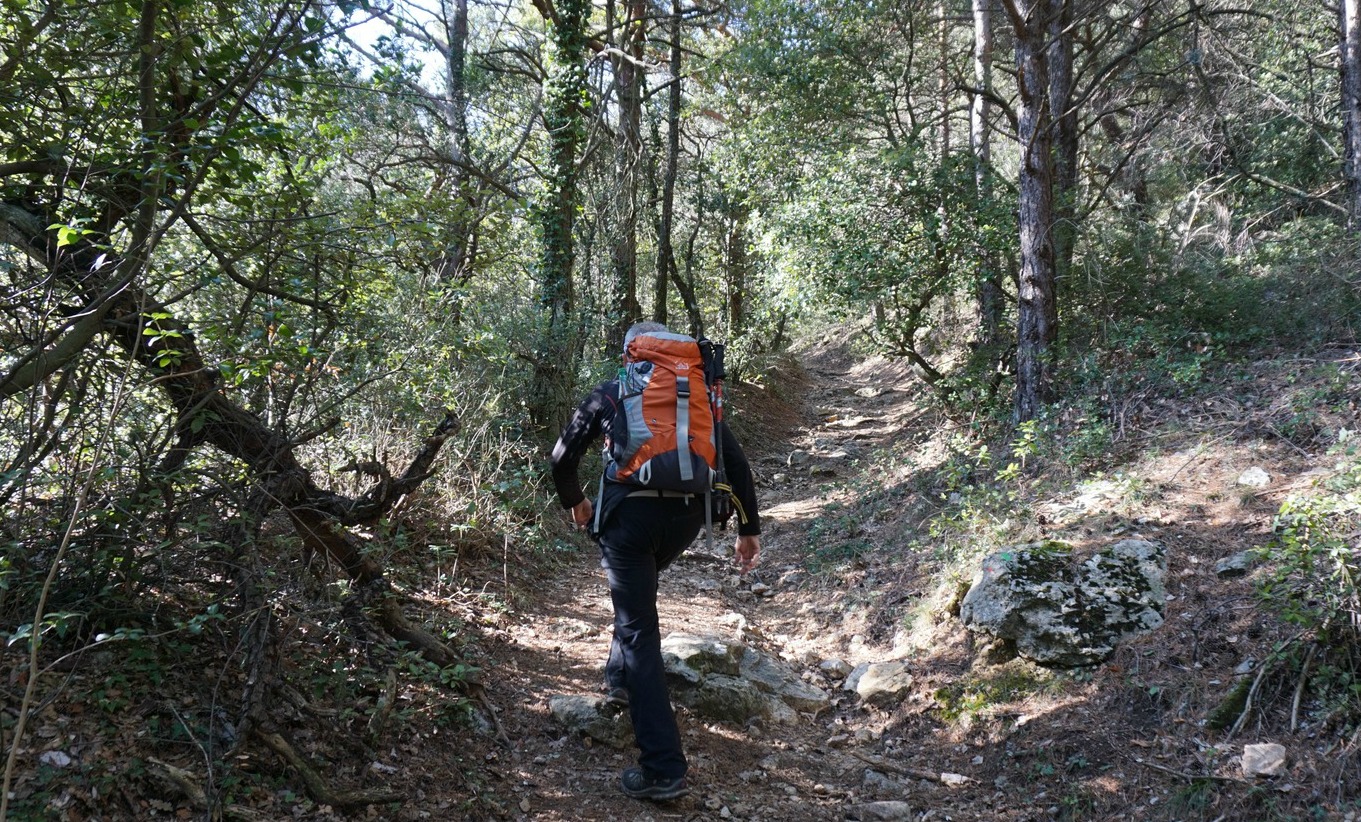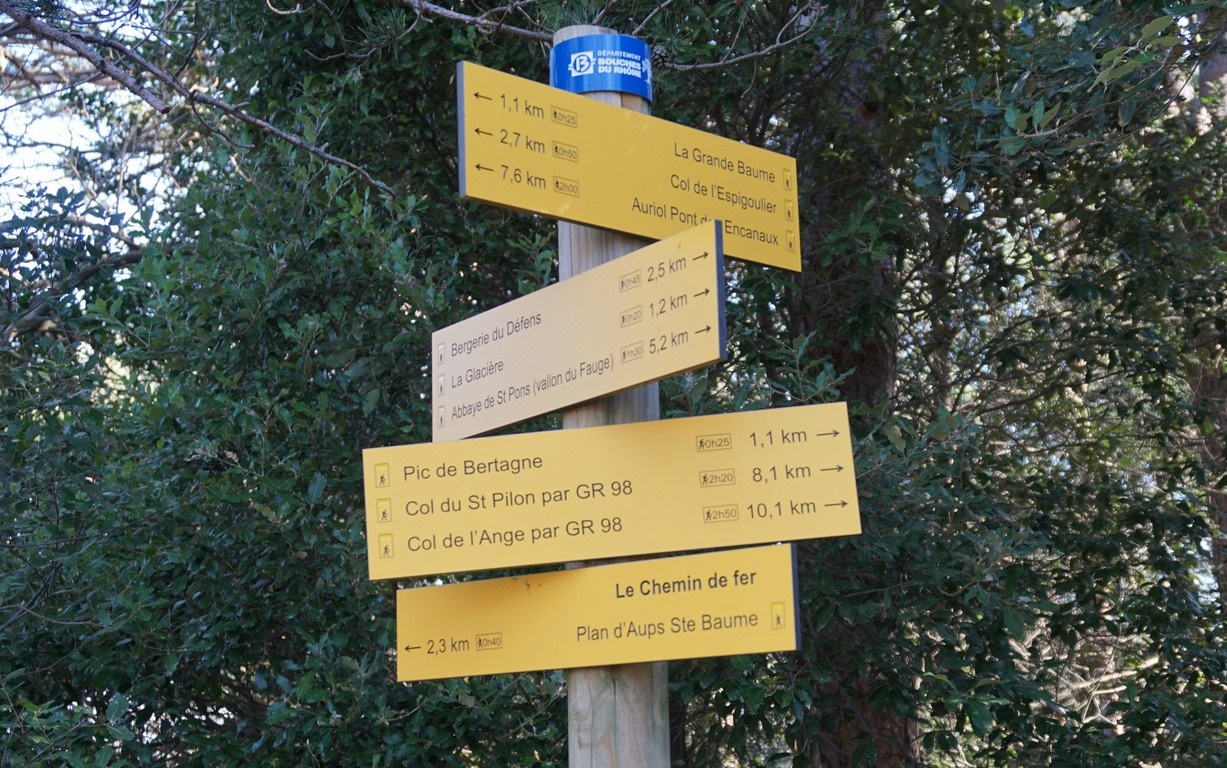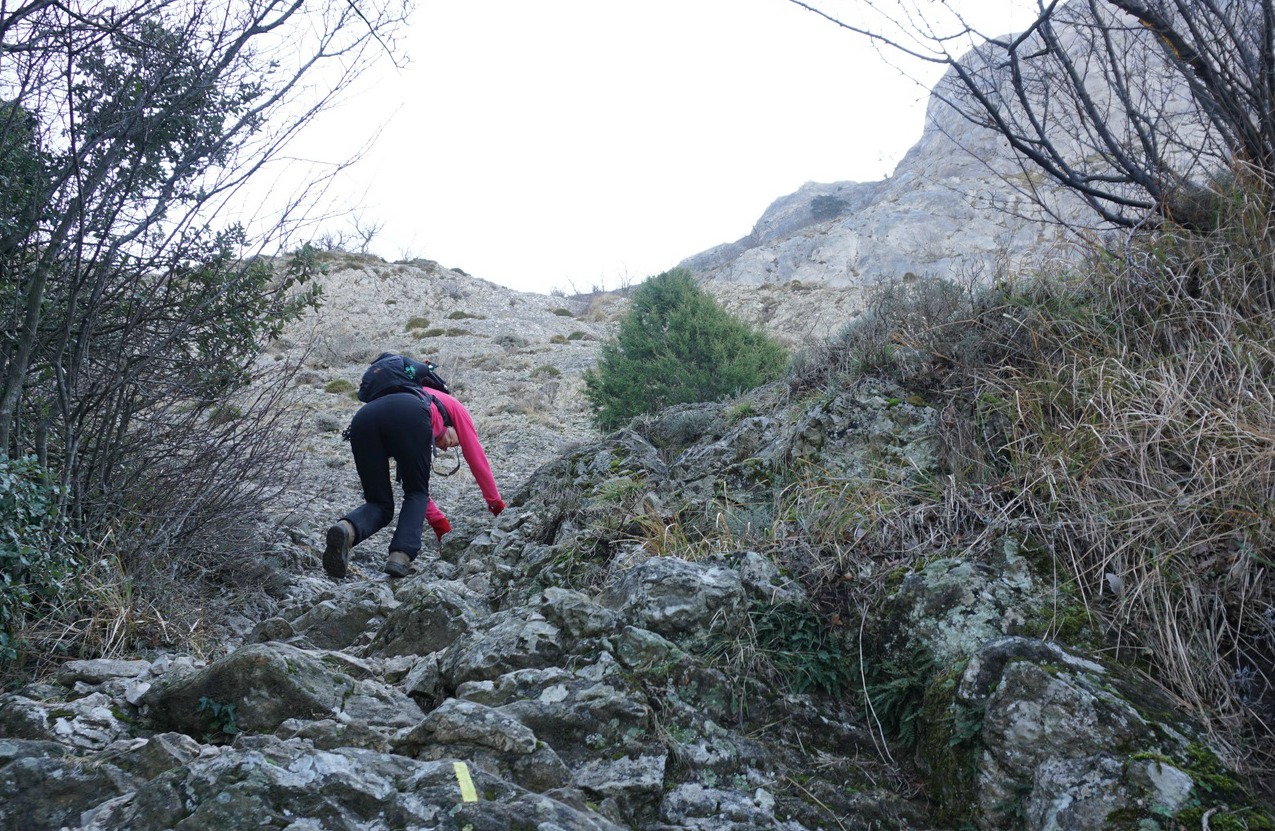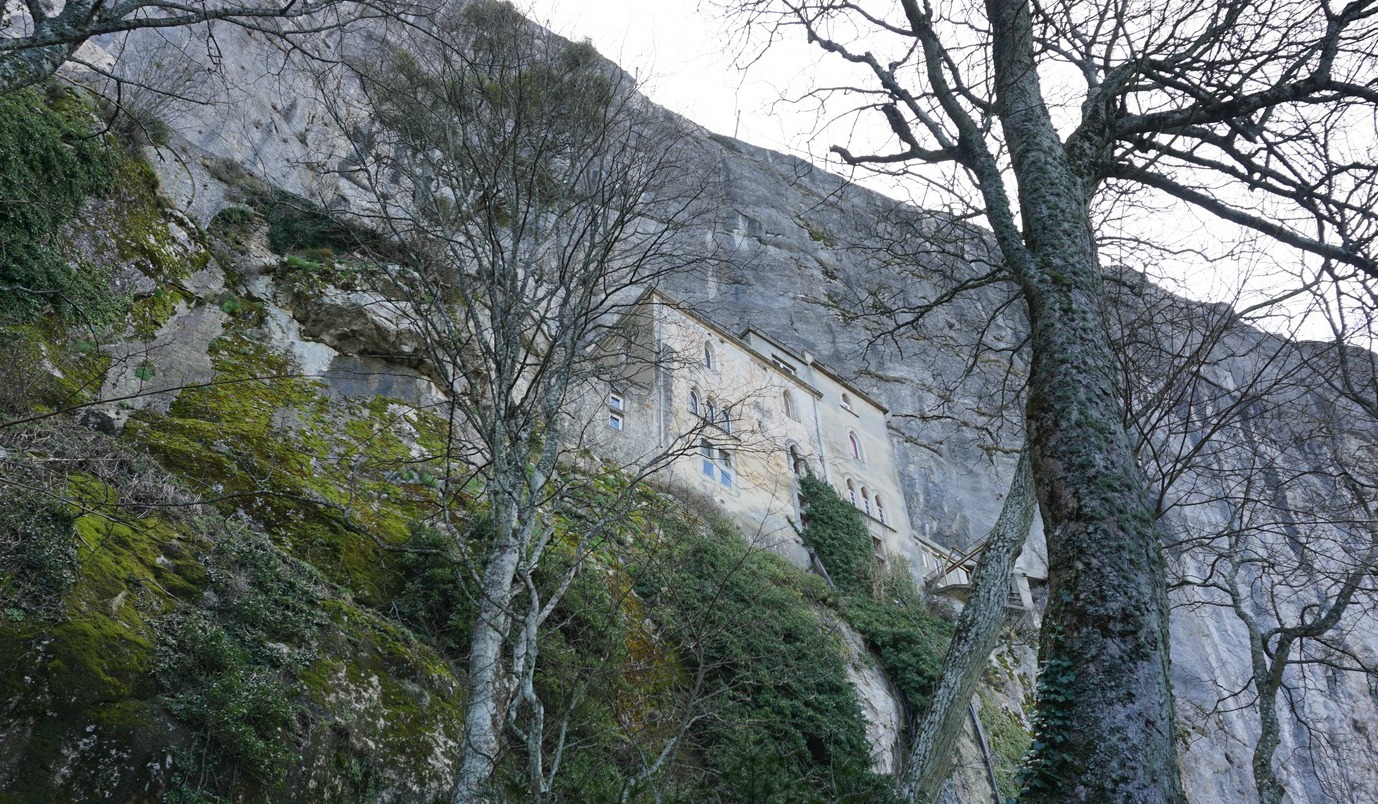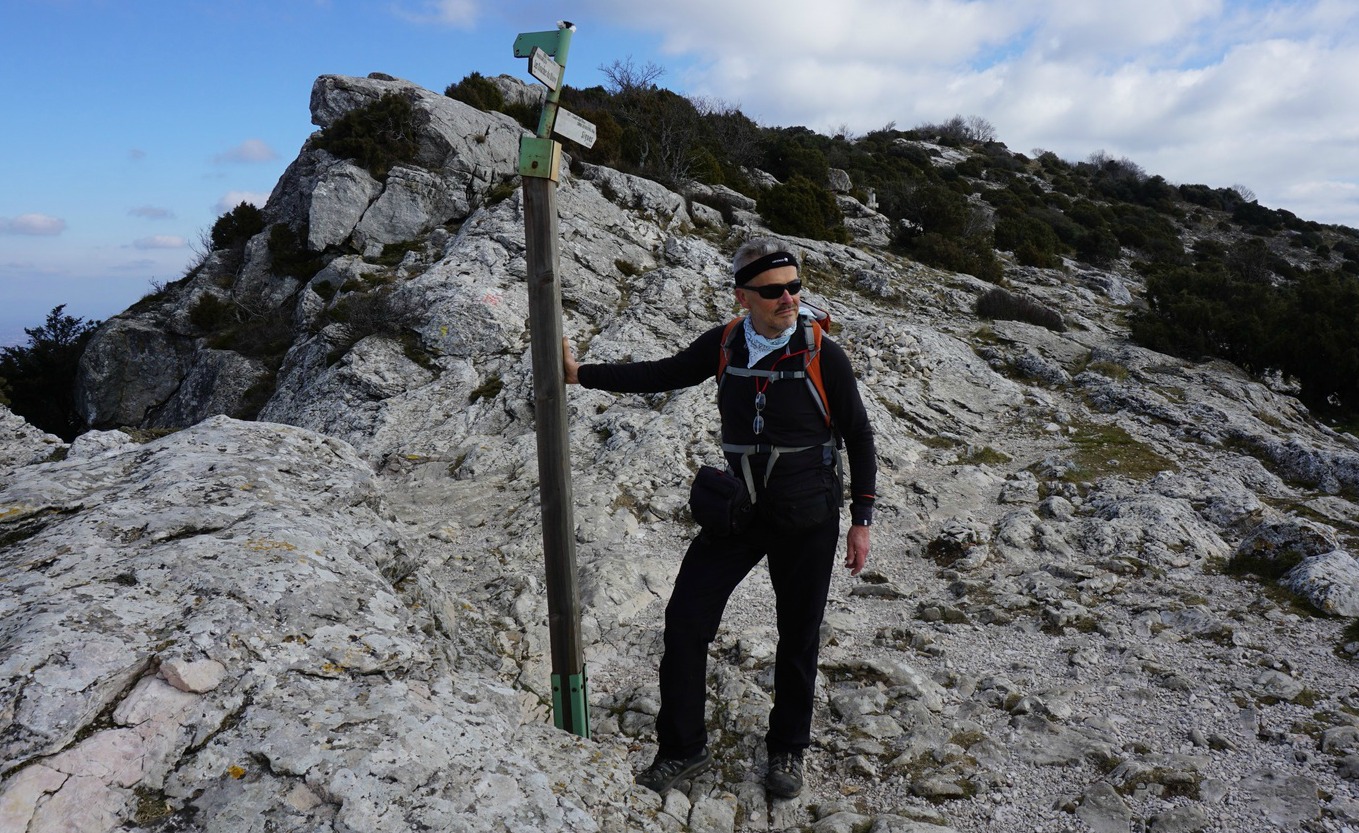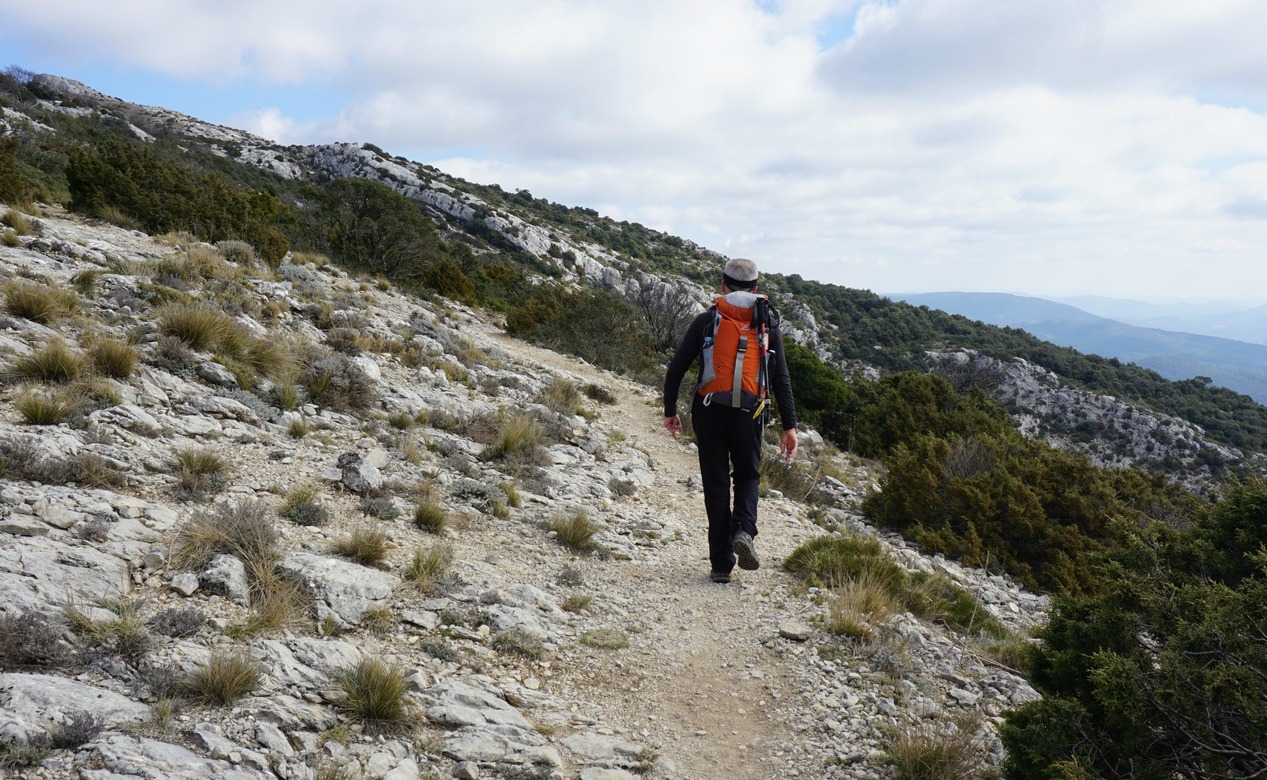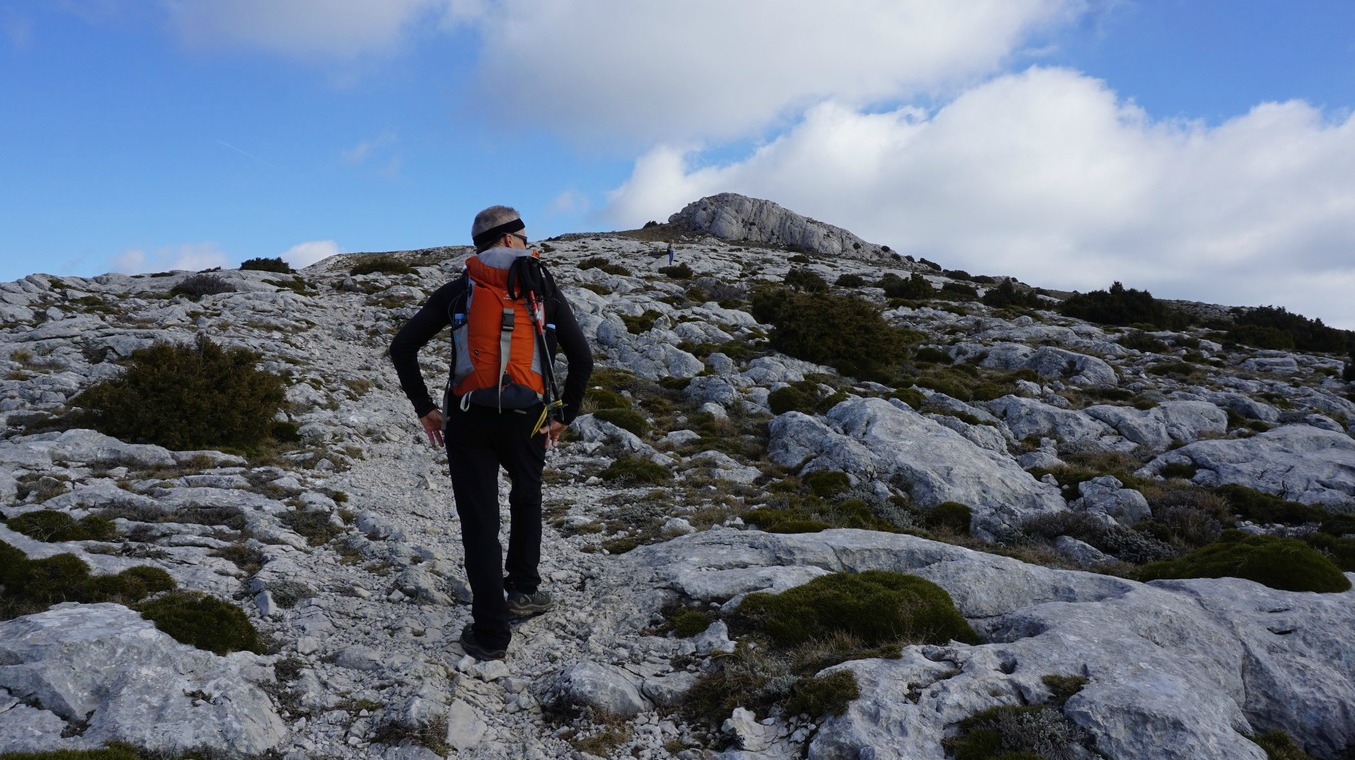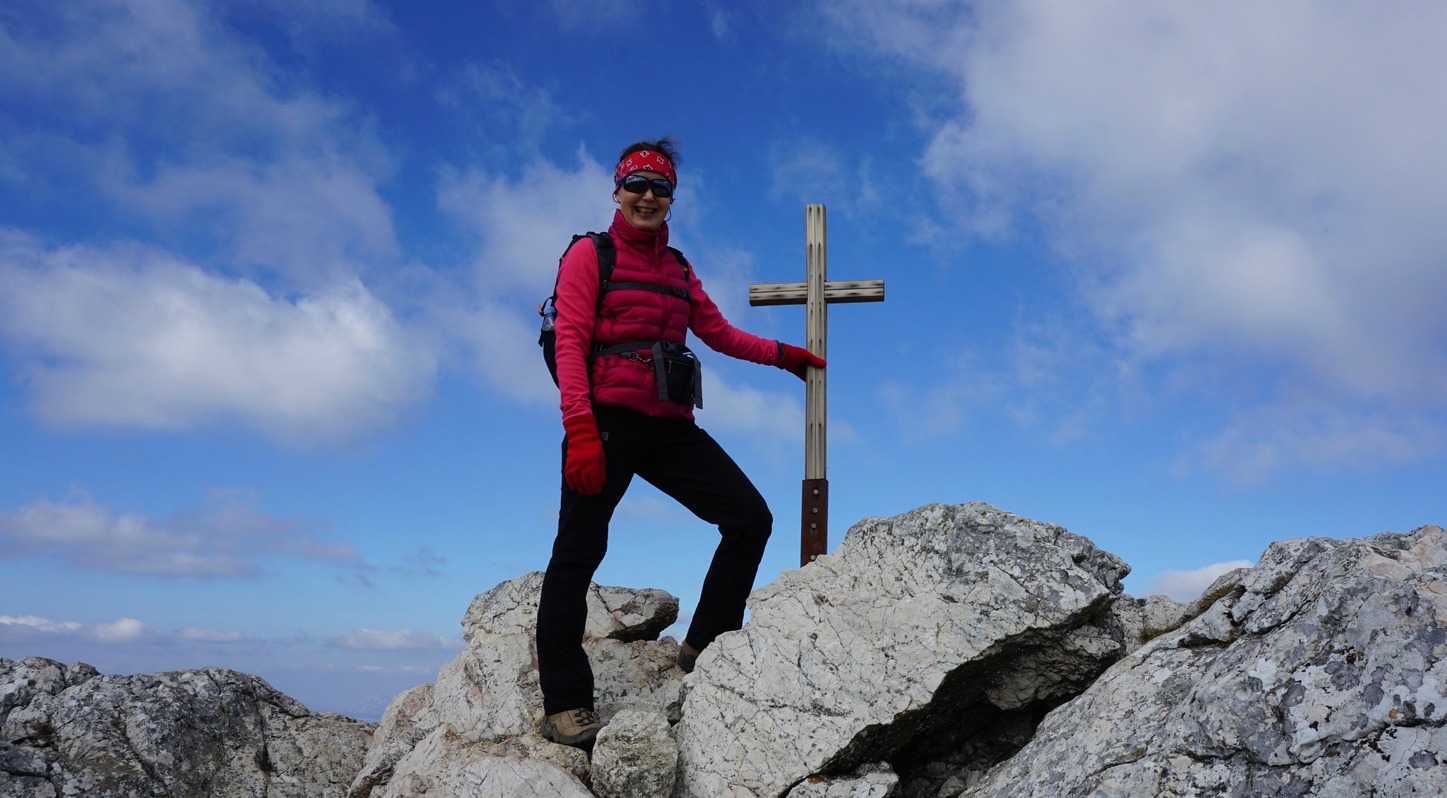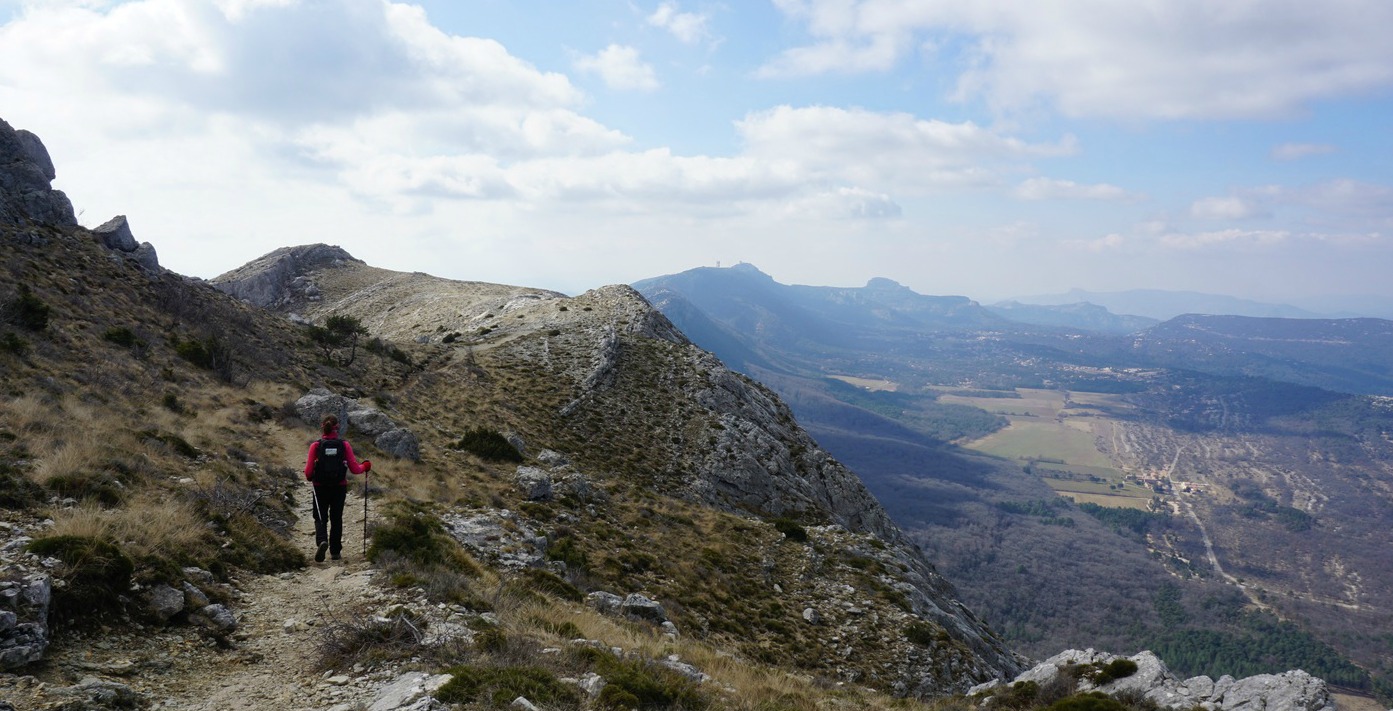

Glanum in Bouches-du-Rhône, south of St-Rémy-de-Provence was a tourist site already in the 16th century because of its well-preserved Roman monuments.
The first inhabitants were Gauls (6th and 7th centuries B.C.). Glanum became a Roman colony in 27 B.C. and important urban construction was started. During the Roman era via Domitia from Spain to Italy ran through Glanum.
In 260 A.D. Glanum was invaded by the Alemanni. The inhabitants had to flee and founded the town of Saint-Rémy-de-Provence.
After admiring the antique monuments, we started our hike to Rocher des deux Trous, passing first the Saint-Paul-de-Mausole Hospice where Vincent Van Gogh was interned.
At the hospice, we forked right (south), passed the Glanum site and came to the start of the botanical trail (Sentier botanique) where a map of several hiking trails was displayed. The trail ascended in the Valley of Clerg, where there was information about the local flora at several spots. We continued as far as to a paved service road, forked left and continued along it, heading southeast. The crossroads to our goal was signposted, and we took a wide unpaved trail straight to the Rocher des deux Trous. This is the easiest itinerary with yellow markings to Le Rocher. Other options include shortcuts over the hills or a steep climb via Mont Gaussier.
As the name says, the Rocher des deux Trous is a steep rock formation with two big holes. Saint-Rémy-de-Provence and the surrounding plateau can be viewed through the holes. During the summer months, access to these trails is restricted due to the high risk of forest fire.
We returned along the same trail. It was a great day as we could combine history and hiking in the Les Alpilles Massif.
Our GPS track is shown below.
Distance: 8,3 km
Duration: 2h 30
Elevation gain: 238 m

The small town of St- Maximin in Var not far from the A8 motorway has become a popular stop for lunch for travellers touring Provençe. But St- Maximin has been visited by pilgrims for centuries because of the Mary Magdalene legend. Every 22nd July, hundreds of pilgrims gather to the small town to follow the relics of Mary Magdalene (only the scull and tibia are said to rest) being carried along the narrow streets.
According to the Provençal mythology Mary Magdalene arrived by sea below the summits of of Sainte- Baume massif and lived in a cave for several years. When she felt that death was imminent, she descended from the mountains, received the last blessing from Saint Maximin and died.
In 1279, the count of Provençe claimed to have found the crypt with the relics of Mary Magdalene hidden by local people. He then started the construction of a basilica and monastery at the site. The basilica’s present Gothic shape was completed in the fifteenth century, but its decoration continued long after.
We visited the basilica in mid-February in connection with a hiking trip to the Sainte-Baume Massif. For more atmosphere, we stayed in Hotel Le Couvent Royal which is next to the basilica and used to be a monastery. It is built around a cloister and its excellent restaurant and breakfast room are in Gothic style.
The basilica is certainly worth a visit. The overall Gothic style is impressive. The crypt, where the relics of Mary Magdalene are kept, is under the basilica’s floor. The basilica was open daily from 7.30 am to 7.30 pm during our visit.

This is a great recipe to make in winter when organic local lemons from Eze and organic oranges are available in our supermarket in Nice. Fresh whole sea bream, daurade, is used in the recipe but it works well with any fresh whole white fish.
2 servings
2 serving size daurade, sea bream
1 organic lemon
1 organic orange
2 tbsp. olive oil
2 tbsp. minced parsley
A pinch of salt, optional
Ask your fish monger to clean and descale the fish.
Preheat the oven to 200°C, roast.
Wash the orange and lemon and cut them into thin slices. Place 1 tbsp. minced parsley and a pinch of salt, if you wish, in the cavity of each sea bream. Then fill the cavities with some lemon and orange slices. Place the sea bream in an oven- proof dish and divide the rest of the lemon and orange slices on top of the fish. Sprinkle 2 tbsp. olive oil over the fish.
Roast in 200°C for about 30 minutes depending on the size of the sea bream. Test that the fish is done by making a deep cut with a sharp knife or by looking inside the fish. The fish is cooked when it is opaque.
Serve with steamed new potatoes and some wilted spinach or chard.

Pic de Bertagne (1041 m) is the westernmost summit of the Sainte-Baume Massif. From the summit, view to the Mediterranean Sea is impressive. Unfortunately, on our given day foggy clouds were ascending from the sea.
From Plan d'Aups-la-Sainte-Baume town centre we followed a small road about 500 m to La Brasque. The road that went up to the mountain ridge was closed for unauthorized traffic. We used the spacious parking before the gate.
We took the trail on the right-hand side of the road that ascended in the woods to Col de Bertagne. Here we noted a monument erected for the memory of Excursionnistes Marseillais and next to it a comprehensive signpost as the col was at a crossroads of many trails. Our plan was to climb directly to Pic de Bertagne. Another longer option was to circle under the mountain and then to ascend from the southern side.
The signpost showed the direct way: 25 min and 1,1 km with frequent yellow markings. We first ascended in the woods. Soon the incline became steeper, and we came above the tree line. We had to scramble for 15 min or so, and wet rocks made the progress slower and more delicate.
We eventually reached the mountain ridge and a plateau 400 m from Pic de Bretagne. The paved road ran along the ridge to the air traffic radar on the summit. Entry to that area was prohibited. We nevertheless found a good spot for our picnic near the installation.
On the way back we used the road. The trail we climbed would have been dangerous to descend.
Climb: 350 m
Distance: 8,3 km
Duration: 2h 20
Map: IGN 3245 ET

This simple recipe needs quality ingredients: organic chicken thighs, fresh sage leaves, and a sprig of fresh rosemary.
2 servings
4 organic chicken thighs with skin, hauts de cuisse de poulet
4 large fresh sage leaves
A sprig of fresh rosemary
2 tbsp. olive oil
1 small onion
1 clove garlic
50 ml white wine
150 ml hot chicken stock
Freshly ground black pepper
1 egg yolk
Juice of ½ lemon
Chopped parsley to decorate
Push the sage leaves under the chicken skin. Warm the olive oil in a heavy casserole over medium heat and fry the chicken thighs on both sides until golden. Chop the onion and mince the garlic clove and add to the casserole. Continue cooking for about 5 minutes.
Pour in the wine and chicken stock, add the rosemary and black pepper. Cover and simmer for 45 minutes.
When the chicken is done remove the thighs from the casserole and keep warm.
Strain the cooking liquid remaining in the casserole through a sieve and turn the heat very low. Whisk together the egg yolk and lemon juice, and keeping the heat very low gradually add to the casserole whisking all the time. This will thicken the sauce.
Divide the chicken thighs and the sauce on the plates. Serve with green lentils or microwaved new potatoes and microwaved butternut squash cubes or broccoli. Decorate with parsley.
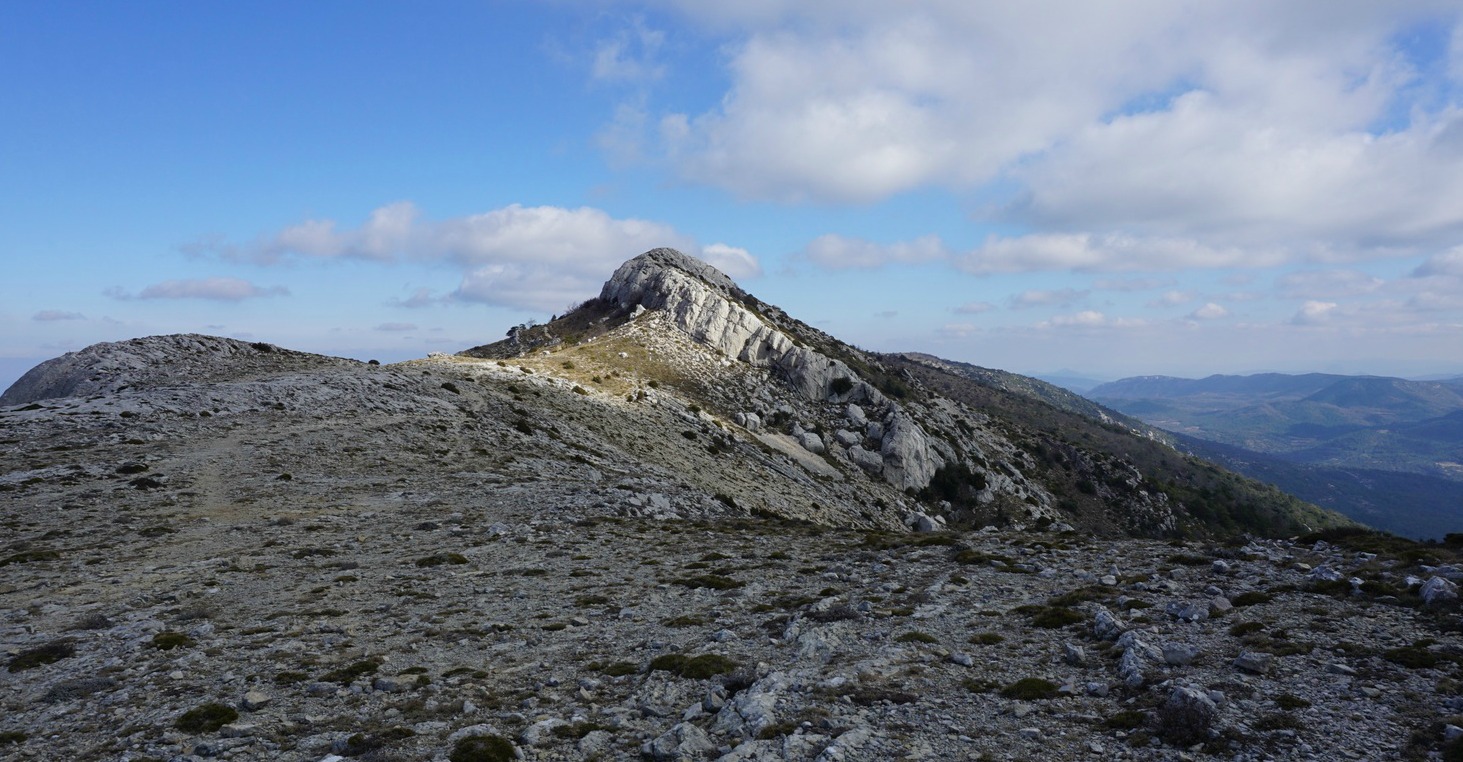
The mythic ridge of the Sainte-Baume Massif about 20 km from the Mediterranean Sea as the crow flies offers great views and extraordinary hiking. But the greatest attraction in this area is Maria Magdalena’s cave and the rather sombre chapels that were built around it. According to the legend, Maria Magdalena arrived first to Marseille and then to this remote cave where she lived for several years.
We started our hike from the Hôtellerie of Sainte-Baume (670 m), following the GR 9 trail which took us past a field before it dove into a magnificent forest (Foret Domaniale de la Sainte-Baume). We ascended along a wide trail to a crossroads where we forked right, making a detour to the cave and the chapels.
After the visit, we descended back a bit to follow the GR9 trail and ascended along it to Col du St-Pilon (953 m) on the ridge of the Sainte-Baume Massif. From here, the GR 9 trail runs to the east, following the ridge whereas to western part is marked as GR 98. We forked left as we had planned, ascending gently in a barren and rocky terrain. The trail was very well marked with white/red signs. The highest point of the ridge (1148 m) is in fact shared by two summits: Jouc de l’Aigle and Signal des Béguines, about 1,5 km further east.
From Col du St-Pilon, the ascent to Jouc de l’Aigle was only about 200 m. Just before the summit, some easy scramble was needed. A cross was erected on the summit. In spite of the haze, we saw Mont Sainte-Victoire in the northwest and the Mediterranean Sea in the south.
We used the same trail back as far as to the crossroads below the cave. Here we took the wide right-hand trail which descended in the forest to “Trois Chenes”, then headed back to our starting point less than a km away.
Climb: 480 m
Duration: 3h 10
Distance: 9,7 km
Map: IGN 3345 OT Signes Tourves Massif de la Sainte-Baume
Our GPS track is shown below







